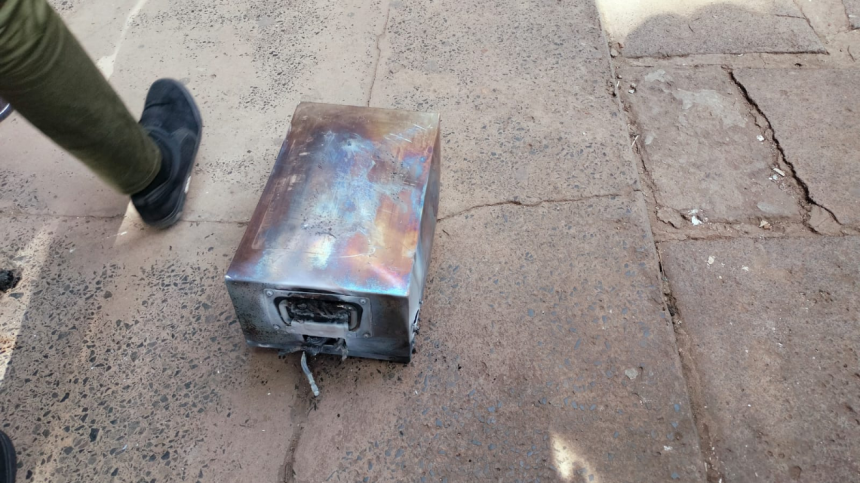At around 9:30 am on Wednesday, December 13, a startling explosion reverberated through the Nairobi Central Business District (CBD), on Moi Avenue, enveloping the area in smoke and prompting safety concerns.
Initially mistaken for a building fire, the chaos and distant screams heightened the urgency of the situation.
Nairobi News rushed to the scene to uncover the source of the commotion, to find that the disruption originated from the explosion of an electric bicycle’s battery.
The victim, who was carrying the charged battery, recounted retrieving the battery from a charging station, and on his way out, he tripped. And when the battery hit the ground, the impact led to it visibly swelling.
The quick thinking of the victim saw him carry the battery out of the building before it exploded on the street.
This incident raises crucial safety questions surrounding e-bike batteries. Research suggests that fires associated with e-bike and e-scooter batteries often result from faulty charging equipment, improper charging practices, and overloaded electrical circuits.
Differing preferences exist, with some opting for a battery-swapping system and others favoring traditional charging methods.
Electric bike prices in Kenya range from Sh 100,000 for bicycles to Sh 300,000 for motorcycles, with dual-battery motorcycles costing more than single-battery ones.
While eBikes offer eco-friendly transportation, their added weight due to the motor and battery poses a disadvantage.
To mitigate the risk of fires during e-bike and e-scooter charging, the London Fire Brigade provides safety recommendations:
1. Avoid blocking exits with charging batteries; store them in a shed or garage if possible.
2. Monitor warning signs of battery failure, indicating a fire risk.
3. Never leave batteries to charge unattended or overnight.
4. Ensure batteries and chargers meet the required quality standards.
5. Use the correct charger from a reputable seller.
6. Allow batteries to cool before charging.
7. Unplug chargers once the battery is fully charged.
8. Install smoke alarms in areas where batteries are charged.



